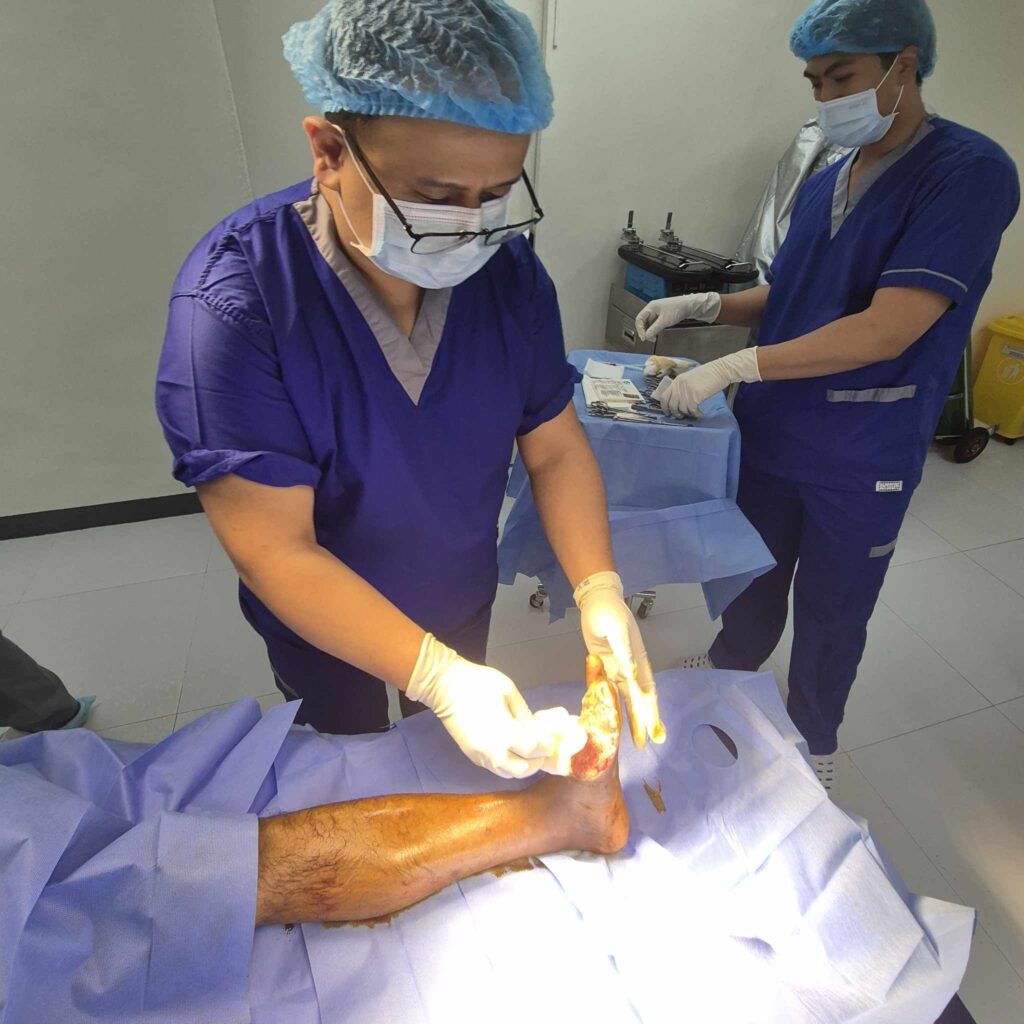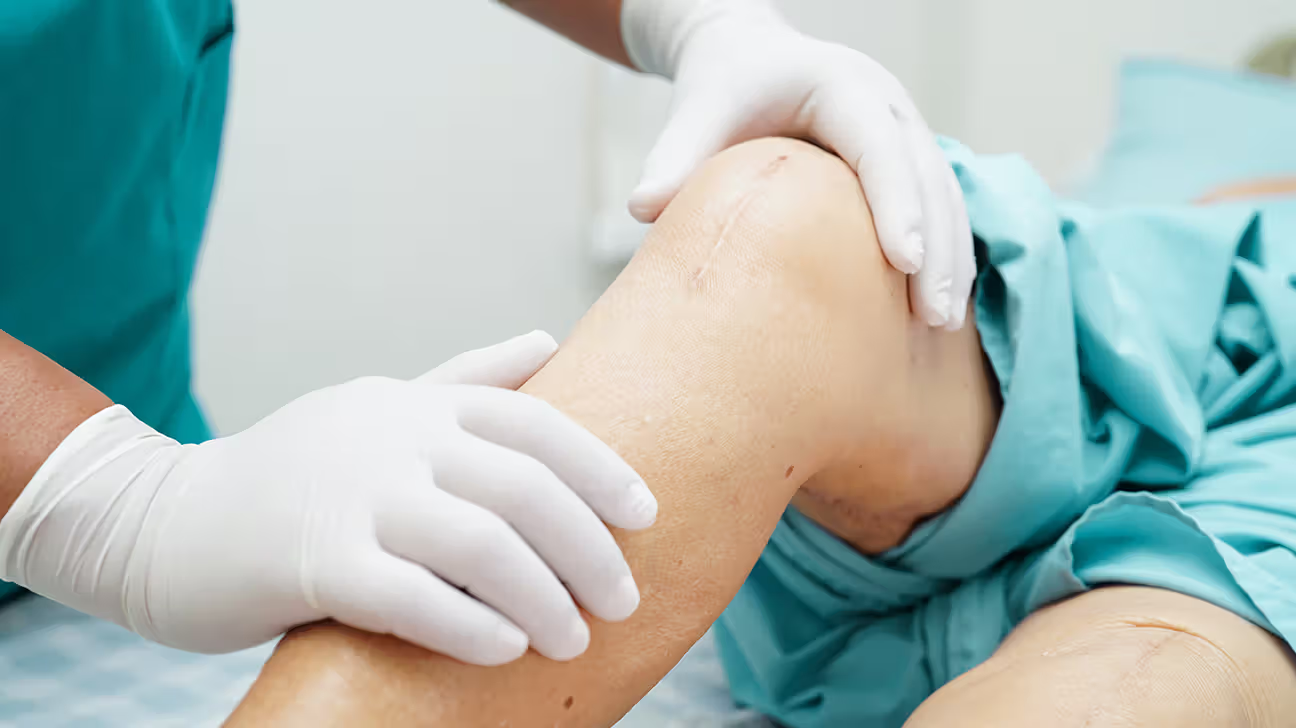Understanding Dead Tissue and Why Removal is Necessary
Dead tissue, often referred to as necrotic tissue, develops when blood supply to an area is cut off, preventing oxygen and nutrients from reaching cells. This leads to tissue death, which can occur after burns, injuries, infections, or chronic illnesses like diabetes and vascular disease. While it may seem harmless at first, leaving dead tissue untreated poses significant risks. It can become a breeding ground for bacteria, raising the chances of serious infections. It also slows or completely halts the healing process, as the body cannot generate new skin cells over necrotic tissue. In some cases, untreated dead tissue may even progress into gangrene, which can threaten overall health. Because of these dangers, dead tissue removal is not optional—it is a vital step in proper wound care and long-term recovery.
The Role of Dead Tissue in Wound Healing
Wound healing is a complex biological process involving inflammation, tissue formation, and remodeling. However, when dead tissue covers a wound, it interrupts this natural sequence. Necrotic or slough tissue blocks oxygen and nutrients from nourishing healthy cells, leading to slower repair. In addition, the presence of dead tissue can obscure the actual depth and severity of a wound, making medical assessment more challenging. Without proper removal, new skin cannot form effectively, leaving the wound open to infections. In contrast, once dead tissue is removed, the wound bed becomes clean, moist, and more capable of supporting healthy tissue growth. This makes the entire healing journey quicker and safer. For anyone dealing with long-lasting wounds, dead tissue removal is often the turning point in recovery.
Different Types of Dead Tissue
Not all dead tissue looks the same, and recognizing the difference is important for selecting the right treatment. Necrotic tissue often appears dry, black, or leathery, signaling complete cell death. Slough tissue, on the other hand, is moist, soft, and often yellow or white in color, and it tends to cover wounds in stringy layers. Another form is eschar, a thick, dark scab-like covering that usually appears after burns or deep wounds. Each type requires careful evaluation before removal to avoid damaging surrounding healthy tissue. Healthcare professionals often classify dead tissue to determine the safest and most effective method for cleaning a wound. Understanding these variations helps patients and caregivers recognize the seriousness of the situation and seek timely medical intervention. Ignoring these differences may delay treatment and increase the risk of complications.
Methods of Dead Tissue Removal
There are several methods of removing dead tissue, each with its own strengths and limitations. The choice depends on the type of wound, the patient’s overall health, and the level of infection risk.
- Autolytic debridement uses the body’s natural enzymes and moisture-retentive dressings to dissolve dead tissue slowly.
- Enzymatic debridement involves applying topical creams or gels containing special enzymes that target necrotic cells.
- Mechanical debridement uses physical methods like wet-to-dry dressings or wound irrigation, which can be painful but effective.
- Surgical or sharp debridement is performed by trained professionals using scalpels or scissors for rapid removal.
- Biological debridement, sometimes called maggot therapy, involves using sterilized larvae that eat away only the dead tissue while sparing healthy cells.
Each technique has specific advantages, such as speed, comfort level, or precision. However, they also carry potential risks, making professional evaluation critical before choosing the right approach.
Professional vs. At-Home Dead Tissue Removal
Although some wound care can be managed at home, dead tissue removal should be handled with caution. Professionals have the training and tools to ensure tissue is removed safely without harming surrounding skin. Attempting to cut or scrape dead tissue at home carries high risks of infection, excessive bleeding, or worsening the wound. That said, patients can still support healing under medical guidance by practicing proper at-home care. This includes cleaning the wound gently with prescribed solutions, applying the correct dressings, and following a healthy diet rich in protein, vitamins, and minerals. Caregivers and patients should also monitor the wound closely for changes in color, odor, or fluid drainage. In many cases, the combination of professional treatment and at-home support provides the best results for long-term healing.
Tools and Products Used in Dead Tissue Removal
Modern wound care involves a variety of tools and products designed to aid safe and effective dead tissue removal. Moisture-balancing dressings, such as hydrogels and hydrocolloids, help soften necrotic tissue for easier cleaning. Enzymatic ointments are another option, applied directly to break down damaged tissue. For more advanced wounds, clinicians may use specialized instruments like scalpels or curettes to carefully remove dead layers. Vacuum-assisted closure devices, which apply gentle suction, can also help in preparing the wound bed for healing. In addition, innovative products such as bioengineered dressings and growth factor therapies are becoming more common in wound care. These advancements not only make the process more efficient but also improve patient comfort. Understanding what tools may be used allows patients to feel more informed and less anxious about the procedure.
Pain Management and Patient Comfort During Removal
One of the most common concerns about dead tissue removal is pain. Fortunately, there are several ways to minimize discomfort. Local anesthesia or numbing creams are often used during surgical debridement to ensure the procedure is tolerable. For less invasive methods, healthcare providers may recommend over-the-counter pain relief before and after treatment. Gentle techniques, such as autolytic and enzymatic debridement, are slower but less painful alternatives for sensitive wounds. Clinicians also prioritize patient-centered care, adjusting their approach based on pain thresholds and individual needs. Open communication between patient and caregiver is essential in addressing fears and ensuring the process feels manageable. By focusing on comfort, healthcare providers make the overall experience less intimidating, encouraging patients to stay consistent with wound care.
Preventing Dead Tissue Formation
While removal is important, preventing dead tissue from forming in the first place is even better. Proper wound cleaning with mild solutions and sterile dressings can drastically reduce the chance of necrosis. Patients should avoid leaving wounds uncovered or exposing them to dirt and bacteria. Nutrition also plays a crucial role—foods rich in protein, vitamin C, zinc, and iron support faster healing. Hydration is equally important for maintaining skin elasticity and circulation. Avoiding habits like smoking or excessive alcohol consumption can further reduce risks, as these slow down circulation and oxygen delivery. Regularly checking wounds for early signs of necrosis allows for quicker treatment and better recovery outcomes. With consistent care, many patients can prevent dead tissue from becoming a serious complication.
Potential Complications and Warning Signs
Dead tissue that is not removed can lead to severe consequences. One of the most dangerous risks is infection, which can spread quickly from a wound to the bloodstream. Warning signs include redness, warmth, swelling, pus, and foul odors. Patients may also experience fever, chills, or an overall feeling of fatigue when an infection spreads. In severe cases, untreated dead tissue can progress to gangrene, which sometimes requires amputation. Even when infections do not occur, dead tissue often leads to prolonged healing, leaving wounds vulnerable for weeks or months. Recognizing complications early can prevent hospitalizations and protect overall health. Anyone noticing these symptoms should seek medical help immediately rather than attempting to manage the wound alone.
FAQs About Dead Tissue Removal
How long does dead tissue removal take to heal a wound?
Healing time depends on the size and depth of the wound, but removal usually accelerates recovery by creating a healthier wound bed.
Is dead tissue removal painful?
Some methods can cause discomfort, but pain management options like anesthesia, numbing creams, or gentle techniques make it tolerable.
Can dead tissue heal on its own without removal?
No, the body cannot repair dead cells. Removal is necessary for proper healing.
What happens if dead tissue is not removed?
It increases the risk of infection, delays healing, and may lead to severe complications like gangrene.
What is the safest method of dead tissue removal?
The safest method depends on the wound type and patient’s condition, but professional guidance ensures the best choice for safety and effectiveness.
Takeaway
Dead tissue removal is a vital part of wound care, helping the body heal effectively and preventing serious complications. With multiple methods available—ranging from natural enzymatic solutions to surgical approaches—treatment can be tailored to each patient’s needs. Professional evaluation is essential for safe removal, but supportive at-home practices also play a major role in recovery. By understanding the process, recognizing warning signs, and prioritizing prevention, patients and caregivers can feel more confident in managing wounds. Ultimately, removing dead tissue is not just about cleaning a wound—it is about restoring health, preventing infection, and supporting the body’s ability to heal fully.







